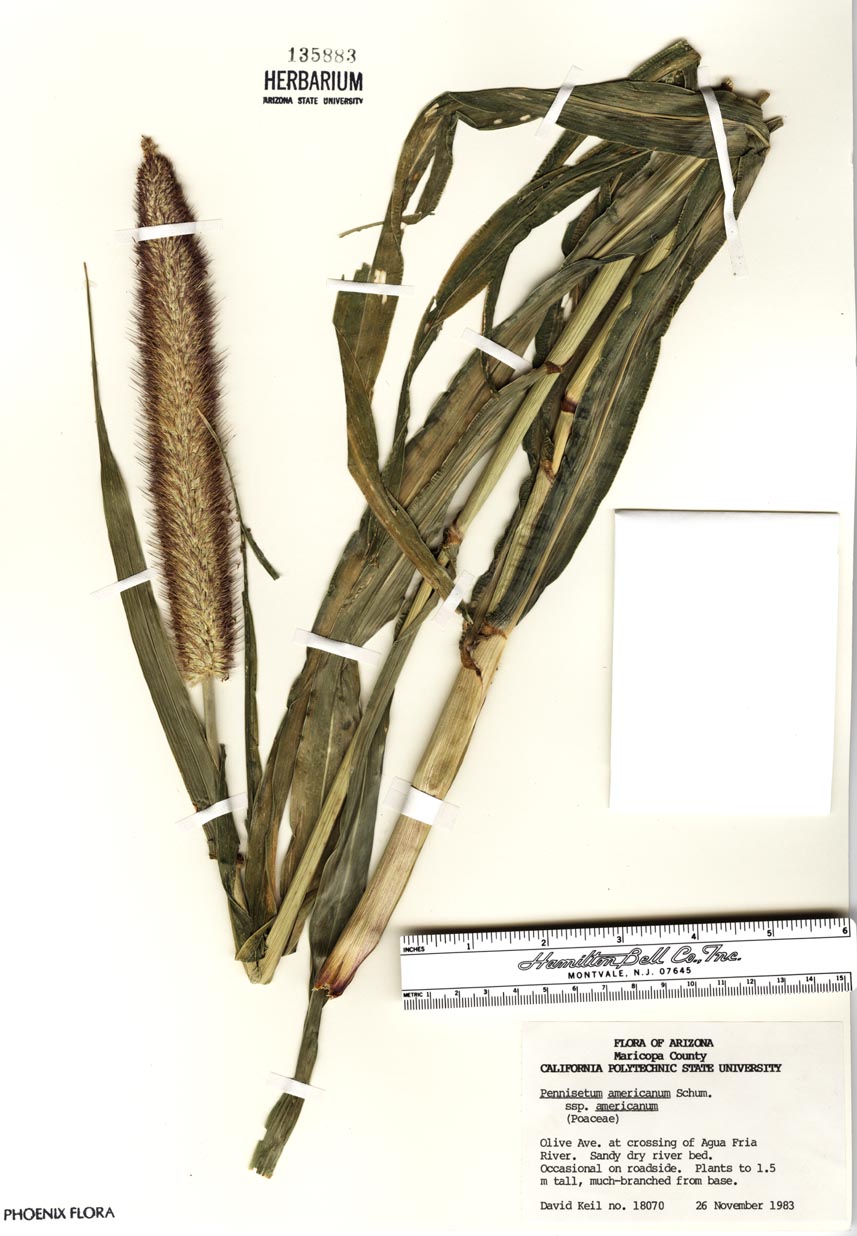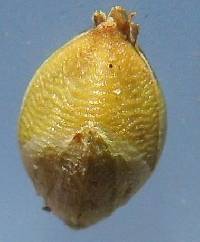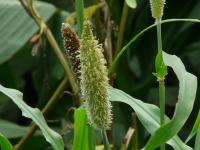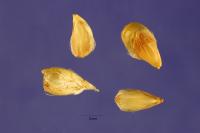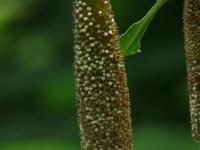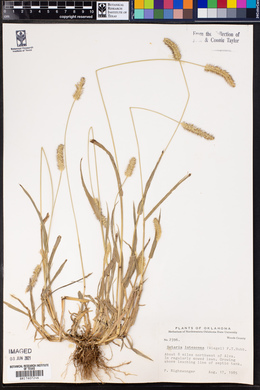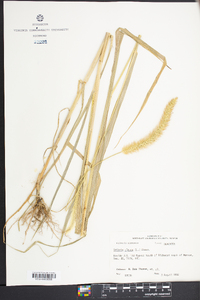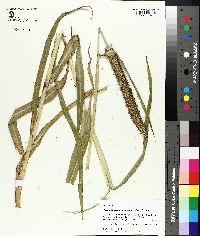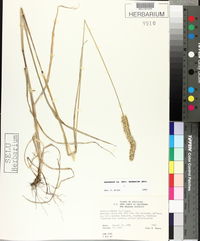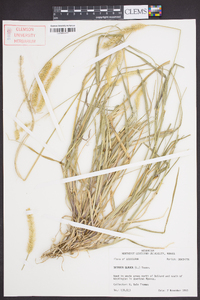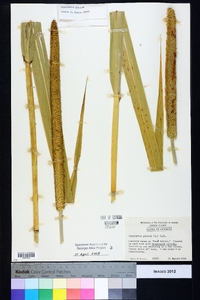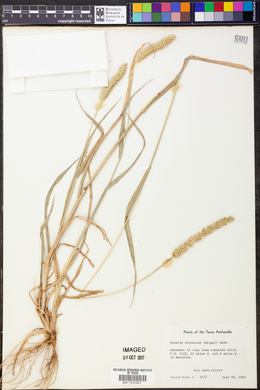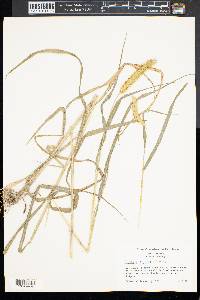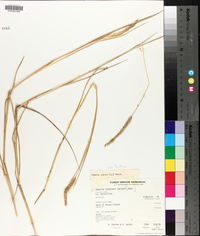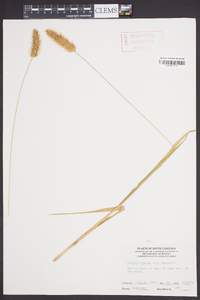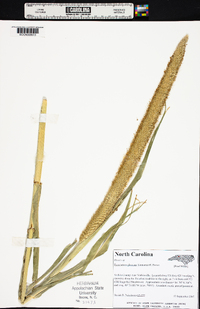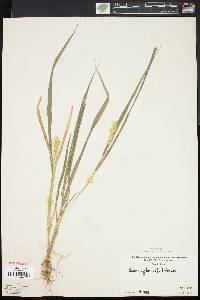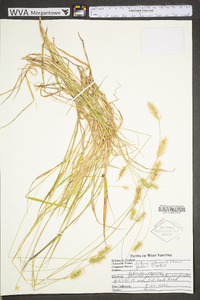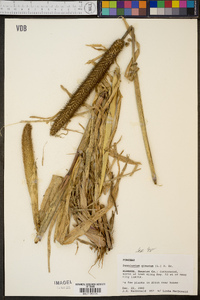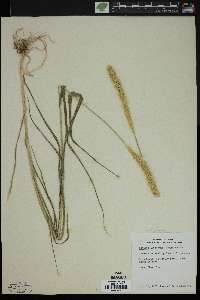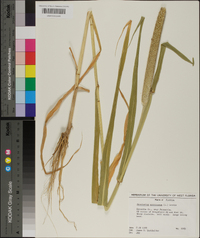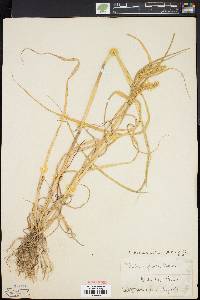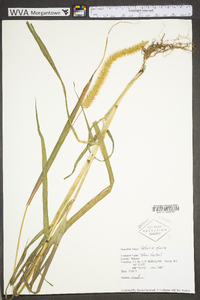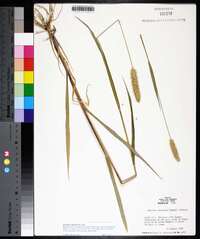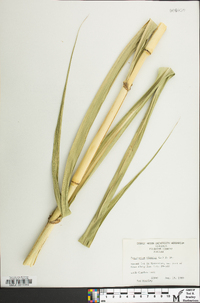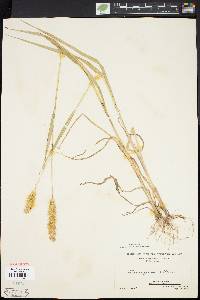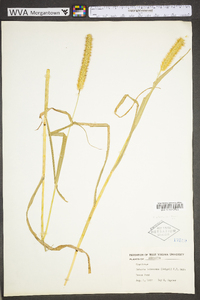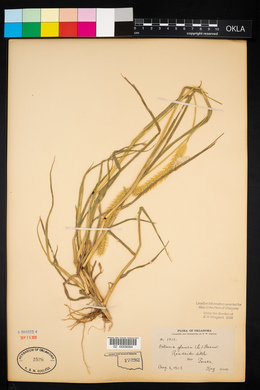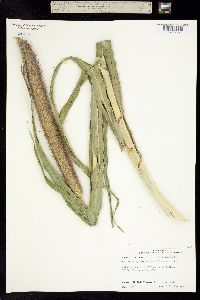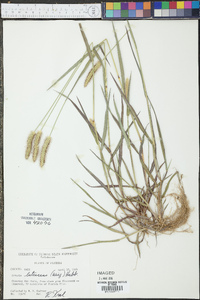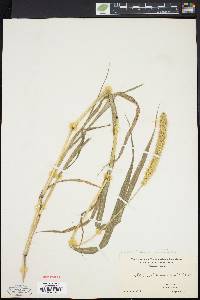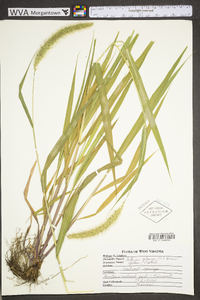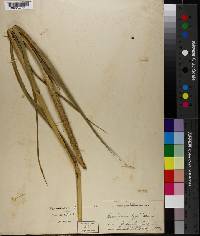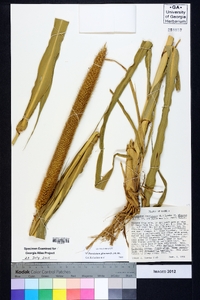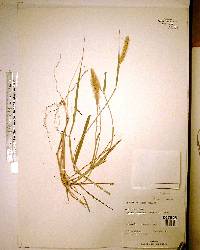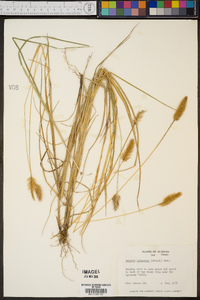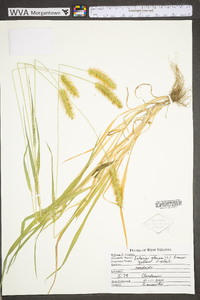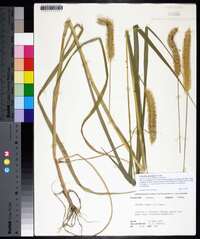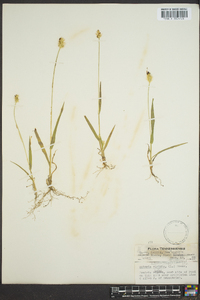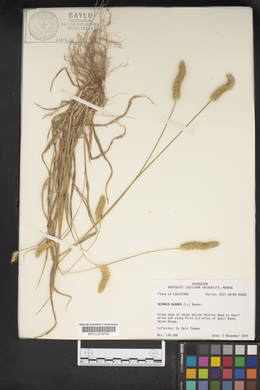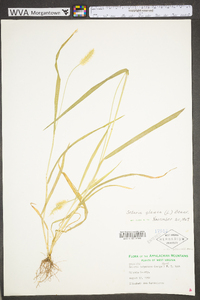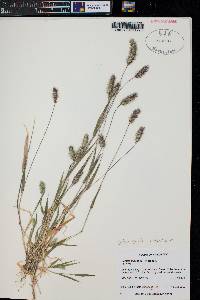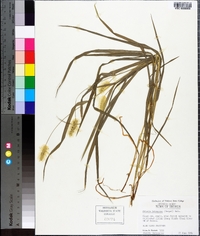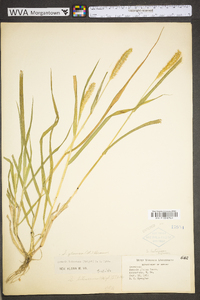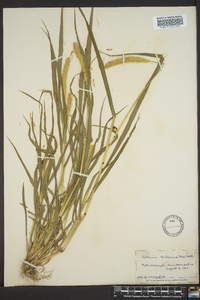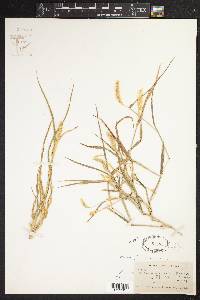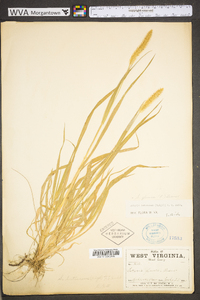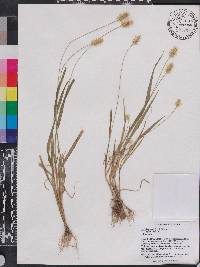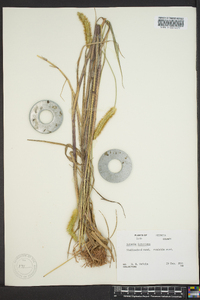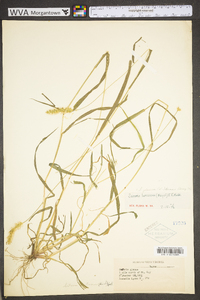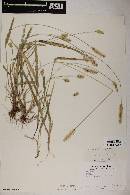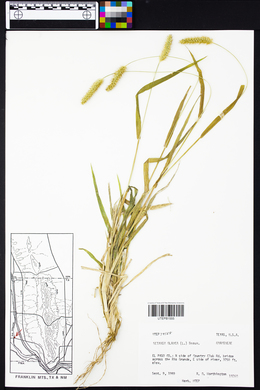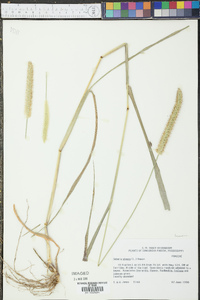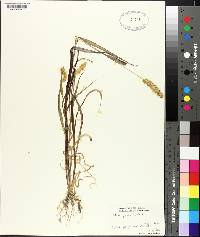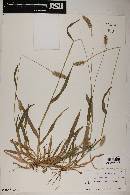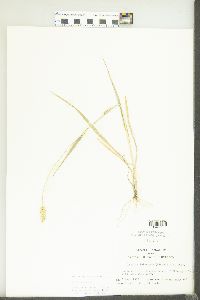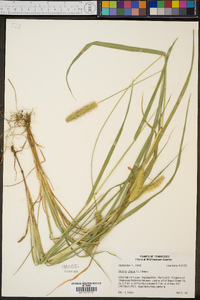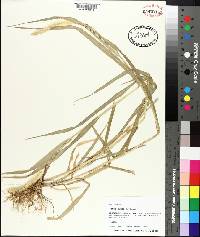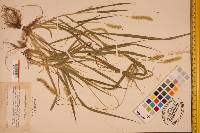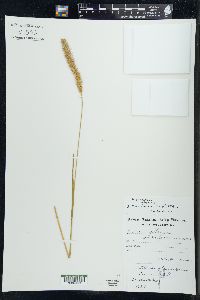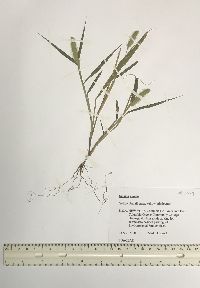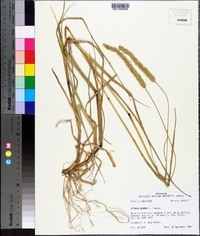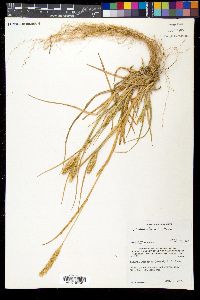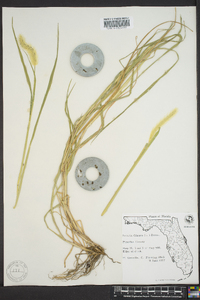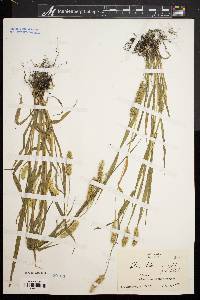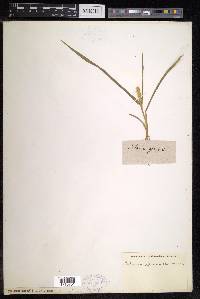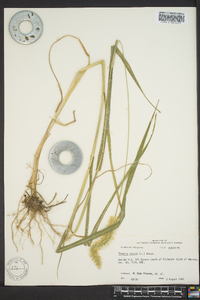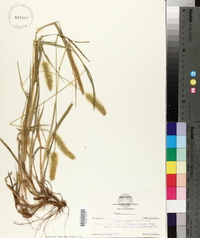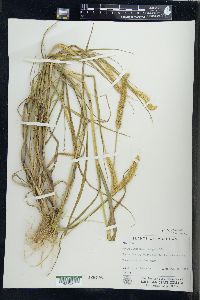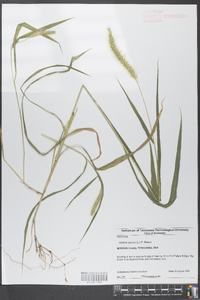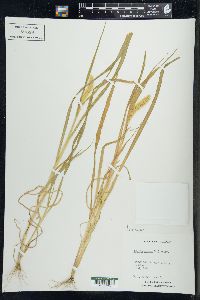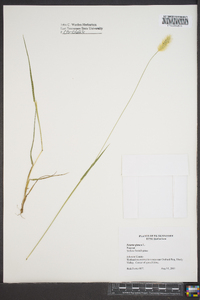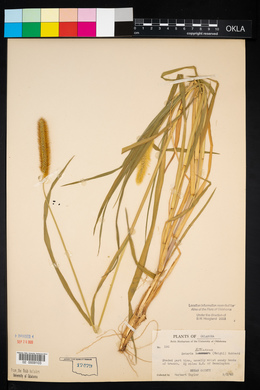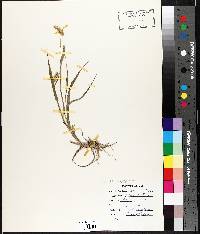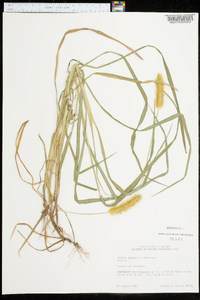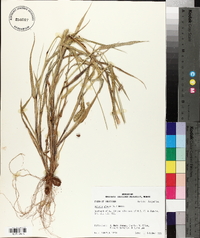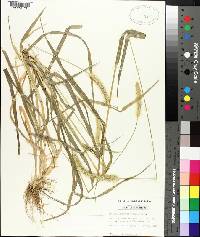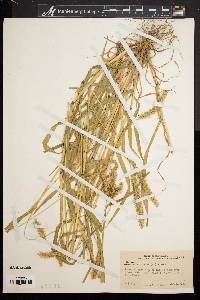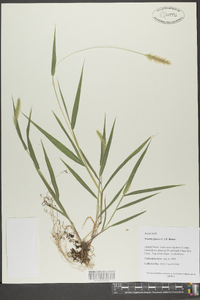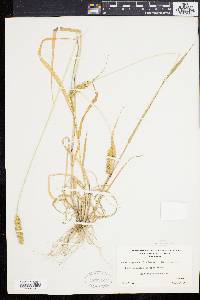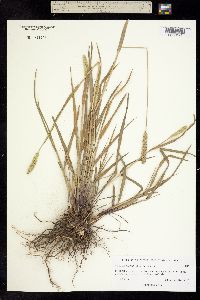
|
|
|
|
Family: Poaceae
Pearl Millet, more...American fountaingrass, pearl-millet, pigeongrass, wild millet, yellow bristlegrass, yellow foxtail
[Alopecurus typhoides Burm. f., moreCenchrus spicatus , Chaetochloa glauca (L.) Scribn., Chaetochloa lutescens (Weigel) Stuntz, Chamaeraphis glauca (L.) Kuntze, Holcus spicatus L., Ixophorus glaucus (L.) Nash, Panicum americanum L., Panicum compressum Balb. ex Steud., Panicum glaucum L., Panicum involucratum , Pennisetum americanum (L.) Leeke, Pennisetum americanum americanum , Pennisetum americanum subsp. americanum , Pennisetum americanum subsp. typhoideum (Rich.) Maire & Weiller, Pennisetum spicatum (L.) Roem. & Schult., Pennisetum spicatum var. typhoideum (Rich.) T. Durand & Schinz, Pennisetum typhoides auct. non (Burm.) Stapf & C.E. Hubbard, Pennisetum typhoideum Rich., Setaria glauca (L.) Beauv., Setaria lutescens (Weigel) F.T. Hubbard, Setariopsis glauca (L.) Samp.] |
Plants annual. Culms 50-300 cm, erect, branching; nodes glabrous. Sheaths glabrous or pubescent, with or without ciliate margins; ligules 2-5 mm; blades 15-100 cm long, 7-70 mm wide, flat, glabrous or pubescent. Panicles terminal, 4-200 cm long, 2-70 mm wide, fully exerted from the sheaths, erect; rachises terete, densely pubescent. Fascicles 33-160 per cm; fascicle axes 1-28 mm, persistent, with 1-9 spikelets; outer bristles 44-131, 0.5-6 mm; inner bristles 6-19, 4-6 mm, plumose; primary bristles 5.5-6.3, ciliate, sometimes noticeably longer than the other bristles. Spikelets 3-7 mm; pedicels 0.6-1.8 mm; lower glumes absent or to 1.5 mm, veinless; upper glumes 0.5-3.5 mm, 3-5-veined; lower florets staminate or sterile; lower lemmas 1.5-6 mm, glabrous, 3-7-veined, margins ciliate; lower paleas vestigial or fully developed, margins ciliate; anthers 2.2-2.5 mm, penicillate; upper florets coriaceous, shiny; upper lemmas 4.3-7 mm, 5-7(9)-veined, margins ciliate; upper paleas 3.4-3.9 mm, pubescent, at least near the base, margins ciliate; anthers 2-2.2 mm, penicillate. Caryopses 2-5.5 mm long, 1.6-3.2 mm wide, protruding from the lemma and palea at maturity. 2n = 14. Pennisetum glaucum, a native of Asia, is cultivated in the United States for grain, forage, and birdseed. It is the most drought tolerant of the tropical cereal crops. Under favorable conditions, 10,000-30,000+ fascicles may be produced. In the Flora region, it is used for soil stabilization, partly because it seldom persists for more than 1-2 years. Annual herb 0.5 - 3 m tall Leaves: alternate, two-ranked. Sheaths sometimes hairy. Ligules 2 - 5 mm long. Blades 15 cm - 1 m long, 0.5 - 7 cm wide, lance-shaped, flat, sometimes hairy, parallel-veined. Inflorescence: a spike-like arrangement (panicle) of reduced branches called fascicles, terminal, upright, 4 cm - 2 m long, 2 mm - 7 cm wide, with a densely hairy axis. Fascicles 33 to 160 per centimeter, with numerous bristles and one to nine spikelets. Fruit: a caryopsis, indehiscent, enclosed within the persistent lemma and palea, 2 - 5.5 mm long, 1.5 - 3 mm wide, protruding from the lemma and palea at maturity. Culm: upright, branched, 0.5 - 3 m long, round in cross-section. Spikelets: short-stalked, 3 - 7 mm long. Florets: two per spikelet. Lower florets sterile or male. Upper florets shiny and leather-like. Anthers three. Stigmas red. Glumes:: Lower glumes (if present) to 1.5 mm long, shorter than upper glumes, membranous, lacking veins. Upper glumes 0.5 - 3.5 mm long, longer than lower glumes, three- to five-veined. Lemmas:: Lower lemmas 1.5 - 6 mm long, equal to spikelets, three- to seven-veined, membranous, marginally fringed with hairs. Upper lemmas 4.5 - 7 mm long, five- to seven-veined, marginally fringed with hairs. Paleas:: Lower paleas rudimentary or well-developed, marginally fringed with hairs. Upper paleas 3.5 - 4 mm long, paleas shorter than lemmas, similar in texture to lemmas, hairy (at least basally), marginally fringed with hairs. Similar species: No information at this time. Habitat and ecology: Native to Asia, cultivated for grain, forage, and birdseed. Very drought tolerant, often used for soil stabilization Occurence in the Chicago region: non-native Etymology: Pennisetum comes from the Latin words penna, meaning feather, and seta, meaning bristle, referring to feathery bristles of some species. Glaucum means glaucous (covered by a white or pale, often waxy, bloom). Author: The Morton Arboretum FNA 2003, Gould 1980 Common Name: pearl millet Duration: Annual Nativity: Non-Native Lifeform: Graminoid General: Annual with stems 50-300 cm, erect, branching, with glabrous nodes, sheaths glabrous to pubescent, with or without ciliate margins. Vegetative: Blades 15-100 cm long, 7-70 mm wide, flat, glabrous or pubescent, ligules 2-5 mm densely ciliate. Inflorescence: Terminal panicles 4-200 cm long, 2-70 mm wide, fully exserted from the sheaths, erect, terete rachises, densely pubescent with 33-160 fascicles per cm, with fascicle axes 1-3 mm, persistent with 1-9 plano-convex spikelets,; bristles irregular, plumose bristles, inner ones 4-6 mm, primary bristles 5.5-6.5 mm, ciliate, sometimes noticeably longer than other bristles, first glume 1-2 mm long, broadly ovate, mucronate, 3-nerved, second glume 1.5-2 mm long, ovate, scarious margins; caryopsis plano convex. Ecology: Found in disturbed sites, along roadways, or under cultivation; flowers July-September. Distribution: Originally cultivated in Africa and now spread throughout the world on every continent; throughout the US in every state. Notes: Cultivated in the US for grain, birdseed and forage. Look for terminal spikes with of fascicles with 1-12 spikelets and 6 or more bristles subtending spikelets, the conspicuously ciliate bristles below spikelets and fascicles not disarticulating from rachises and the caryopsis protruding from florets at maturity. Ethnobotany: Rubbed on the face to fight pimples. The common name is -pearl millet- and this is the most widely grown type of millet. It has been cultivated in Africa for centuries. Etymology: Pennisetum comes from Latin penna for feather and seta for bristle, while glaucum means bluish gray. Synonyms: Panicum americanum, Pennisetum americanum, Pennisetum typhoides Editor: SBuckley 2010, FSCoburn 2015 Annual 3-13 dm, usually erect, often in large tufts; sheaths glabrous; blades loosely twisted, to 30 cm, 4-10 mm wide, scabrous above and with long papillose hairs near the throat, glabrous beneath; infl stiffly erect, cylindric, (3-)5-10(-15) cm, yellowish, the axis hispid; bristles 4-12 below each spikelet, 3-8 mm, antrorsely scabrous; spikelets 3-3.5 mm; first glume 3-veined, a third as long as the spikelet, the second 5-veined, half as long as the spikelet; sterile lemma about equaling the fertile one, clasping a broad hyaline palea of equal length, sometimes staminate; fertile lemma transversely strongly rugulose; 2n=36, 72. Cult. soil and waste places; native of Europe, now a cosmopolitan weed, and abundant throughout our range. (S. lutescens; S. pumila) Gleason, Henry A. & Cronquist, Arthur J. 1991. Manual of vascular plants of northeastern United States and adjacent Canada. lxxv + 910 pp. ©The New York Botanical Garden. All rights reserved. Used by permission. |
|
|
|

